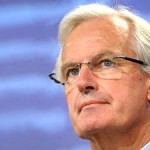Paris – The cost of electricity in the coming years will depend on a number of key parameters, foremost among them the costs of raising financial capital and the price of carbon. This is one of the main conclusions of ‘Projected Costs of Generating Electricity: 2010 Edition’, a new joint study by the International Energy Agency (IEA) and the OECD Nuclear Energy Agency (NEA). The report, which was presented today in Paris by IEA Executive Director, Nobuo Tanaka, and NEA Director-General, Luis Echávarri, comprises the latest data on the costs of electricity generation for a wide variety of fuels and technologies. It establishes a global benchmark for the costs of power supply. “In a period when many countries are looking to invest in electricity capacity while working to reduce carbon emissions, it provides an indispensable basis for any discussion about electricity generation choices,” said Mr. Echávarri. Mr. Tanaka stressed that “to bolster competitiveness of low-carbon technologies such as nuclear, renewables and CCS, we need strong government action to lower the cost of financing and a significant CO2 price signal to be internalized in power markets”.
No technology triumphs overall for baseload generation – it all depends on the specific circumstances
The study shows that no technology holds a consistent economic advantage at a global level under all circumstances. Conditions prevailing domestically matter, and the competitiveness of a generating technology will depend on a number of factors, especially the cost of capital and the price of carbon. Using a common standardized measure of cost [the Levelized Cost of Electricity (LCOE) per MWh over the lifetime of a plant] and assuming a carbon price of USD 30 per tonne of CO2, the study provides results for two real interest rates of 5% and 10%. When financing costs are low (5% case), nuclear energy followed by coal with carbon capture are the most competitive solutions. With higher financing costs (10% case), coal-fired generation followed by coal with carbon capture and gas-fired combined cycle turbines (CCGTs) are the cheapest sources of electricity. Apart from interest rates, generation costs of renewables are heavily dependent on local resources and fast technological improvement. Today, where local conditions are favourable, hydro and wind are competitive generation technologies.
Each technology has strengths and weaknesses, not always captured by the study methodology and depending on the particular circumstances:
Nuclear delivers significant amounts of very low-carbon baseload electricity at stable costs over time. Nuclear must manage, however, high amounts of capital at risk as well as the cost of decommissioning and waste disposal together with social concerns about safety and proliferation.
Coal is economically competitive in the absence of a sufficiently high carbon price. This applies in particular where coal is cheap. However, this advantage is quickly reduced as carbon costs rise.
Coal with carbon capture, based on low coal prices and estimates of carbon capture costs (but not storage), can be competitive when a CO2 price is applied. However, carbon capture has not yet been demonstrated at commercial scale for power plants. Until a number of industrial-scale demonstration plants are operating, the costs for coal with carbon capture will remain uncertain.
Gas presents three advantages: low capital costs, a lower CO2 profile in comparison with other fossil fuel technologies and a high operational flexibility. But gas-fired plants’ generating costs depend highly on gas price levels. Depending on its price relative to other fuels, notably coal, gas may not be competitive for continuous use in baseload power production. However, gas is further helped by the fact that as the marginal fuel, it frequently sets the price in wholesale electricity markets. This enables gas-fired generation to hedge costs against gas price fluctuations and has made CCGTs a low risk choice in OECD countries.
On-shore wind depends on highly favourable local conditions but is competitive in individual cases in the absence of system costs. However, because wind is non-dispatchable, it cannot be strictly considered as a baseload technology.
Choices exist – governments matter
Governments play a key role when it comes to the costs of raising financial capital and the price of carbon. The cost of capital is essentially a function of the risk faced by each option for generating electricity – market risk, technology risk, construction and regulatory risk. With their high capital costs, low-carbon technologies such as nuclear, renewables and carbon capture and storage (CCS) are particularly vulnerable. Smart government action, however, can do much to reduce these risks.
The price of carbon is a decisive factor in the competition between conventional fossil-fuel and low-carbon technologies. The USD 30 per tonne carbon price included in the study reflects a reasonable assumption for the coming years. A significantly higher (or lower) carbon price would decisively tilt the current competitive balance in one direction or another. Choices exist. In presenting these choices, ‘Projected Costs of Generating Electricity: 2010 Edition‘ will be an indispensable tool for decision makers, researchers and stakeholders in the years to come. Thanks to the active co-operation of OECD and non-OECD countries, industry and academia, this new edition covers more countries and technologies than any previous one. It comprises data for almost 200 power plants from 17 OECD countries as well as from Brazil, China, Russia and South Africa, and features a wide array of technologies including coal (both with and without carbon capture), natural gas, nuclear, hydro, on-shore and off-shore wind, solar, biomass, wave, tidal and combined heat and power (CHP).
‘Projected Costs of Generating Electricity: 2010 Edition’ is the seventh in a series of studies on the costs of power generation and has established itself as an unrivalled reference in this domain. The analysis was closely overseen by an international Expert Group on Electricity Generating Costs with more than 50 representatives from 19 OECD member countries, the European Commission and the International Atomic Energy Agency (IAEA). Experts from Brazil, India and Russia also participated.
Press Release dated March 25, 2010













